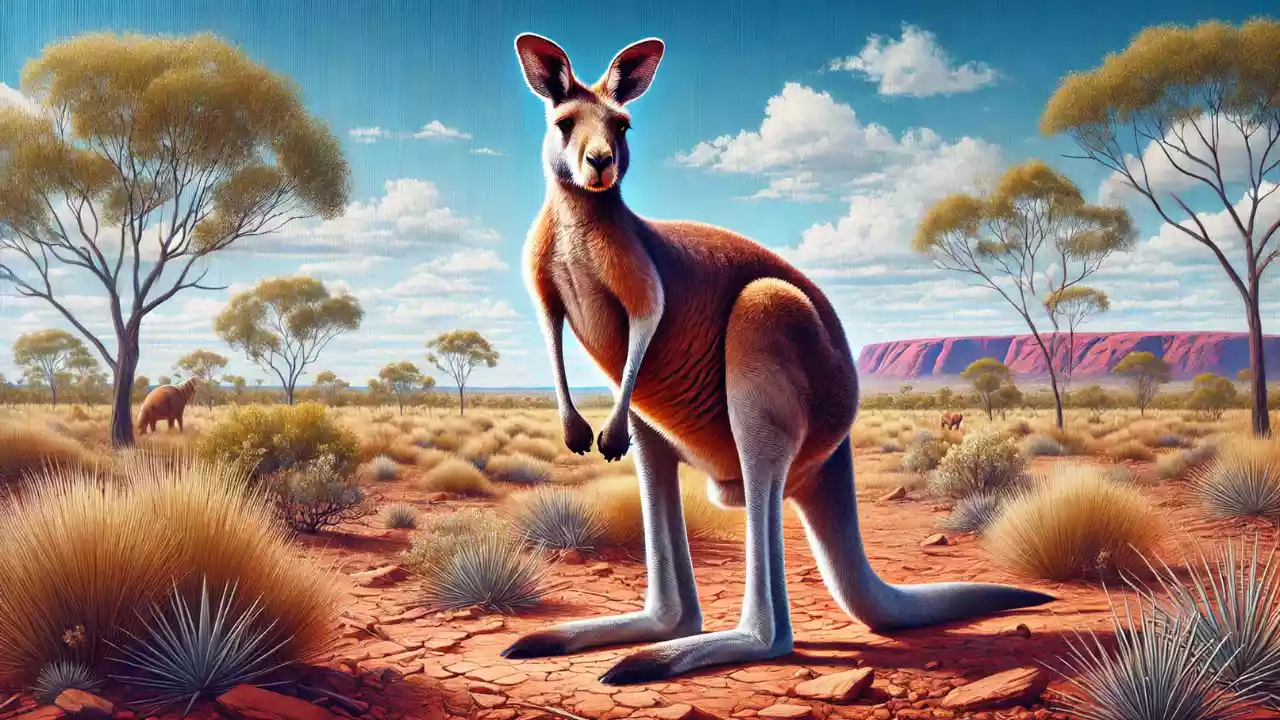Welcome to the exciting world of kangaroos! These iconic Australian marsupials are known for their powerful legs and incredible hopping abilities. But do you know what we call a group of kangaroos? Let’s explore the collective nouns used for kangaroos and dive into some fun examples to help you remember them.
Collective Noun for Kangaroos
| Collective Noun |
|---|
| A Mob of Kangaroos |
| A Troop of Kangaroos |
| A Court of Kangaroos |
| A Herd of Kangaroos |
| A Flock of Kangaroos |
1. A Mob of Kangaroos
Explanation: The term “mob” is the most commonly used collective noun for kangaroos. It emphasizes their social structure and the often large groups they form.
Examples:
- We spotted a mob of kangaroos hopping across the plains, their movements synchronized and graceful.
- The outback was alive with the sight of a mob of kangaroos gathered around the watering hole.
- As we drove through the national park, a mob of kangaroos bounded alongside the road, a thrilling sight to see.
2. A Troop of Kangaroos
Explanation: “Troop” refers to a group of kangaroos moving or traveling together. It highlights their ability to coordinate and stick together as a unit.
Examples:
- A troop of kangaroos made its way through the bush, each one following the lead of the alpha male.
- We watched as a troop of kangaroos crossed the open field, their powerful legs propelling them forward.
- Early in the morning, a troop of kangaroos could be seen grazing peacefully on the hillside.
3. A Court of Kangaroos
Explanation: “Court” is a less common term that conveys the regal and majestic presence of kangaroos, especially when they stand upright and observe their surroundings.
Examples:
- The clearing was home to a court of kangaroos, their vigilant stances making them look like guardians of the land.
- A court of kangaroos assembled in the shade of a large tree, their silhouettes striking against the horizon.
- We admired the court of kangaroos as they surveyed their territory, their posture calm yet commanding.
4. A Herd of Kangaroos
Explanation: “Herd” is a term often used for large groups of grazing animals. When applied to kangaroos, it emphasizes their collective movement and grazing behavior.
Examples:
- We encountered a herd of kangaroos feeding on the lush grasslands, their heads bobbing up and down as they nibbled.
- The vast savannah was dotted with a herd of kangaroos, each one blending into the golden landscape.
- A herd of kangaroos moved gracefully through the open plain, their numbers creating a magnificent sight.
5. A Flock of Kangaroos
Explanation: “Flock” is typically used for birds, but when used for kangaroos, it emphasizes their ability to move together in a coordinated and cohesive manner.
Examples:
- A flock of kangaroos hopped through the valley, their synchronized movements resembling a well-rehearsed dance.
- We observed a flock of kangaroos resting under the shade of eucalyptus trees, their presence serene and peaceful.
- The sunset provided a beautiful backdrop as a flock of kangaroos journeyed across the desert, their silhouettes stark against the colorful sky.
Conclusion
Kangaroos are remarkable creatures that captivate us with their strength, agility, and social behaviors. Knowing the collective nouns like a mob, a troop, a court, a herd, and a flock of kangaroos helps us describe these fascinating animals in their various group settings. Next time you see kangaroos, use these terms to talk about their impressive gatherings!
